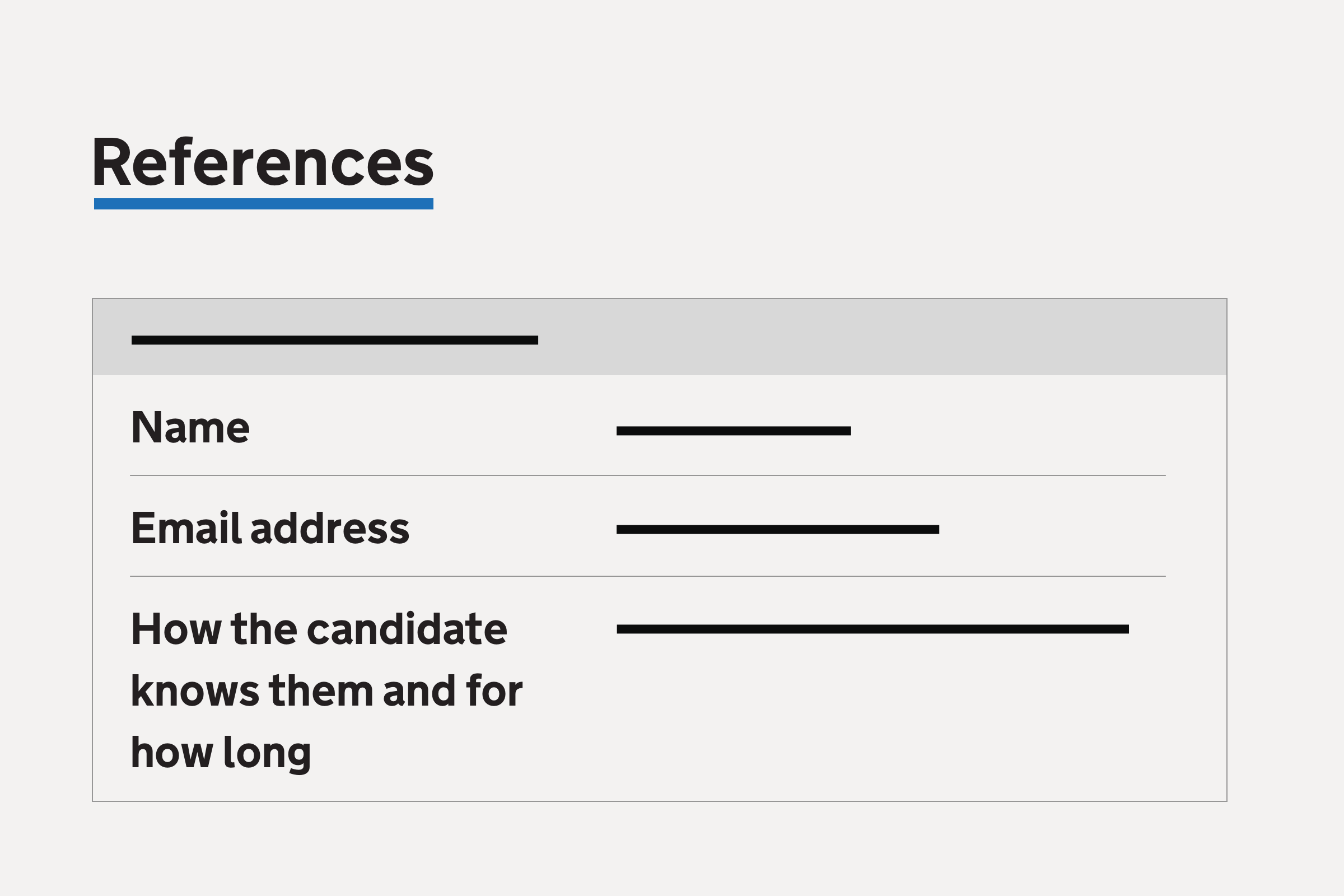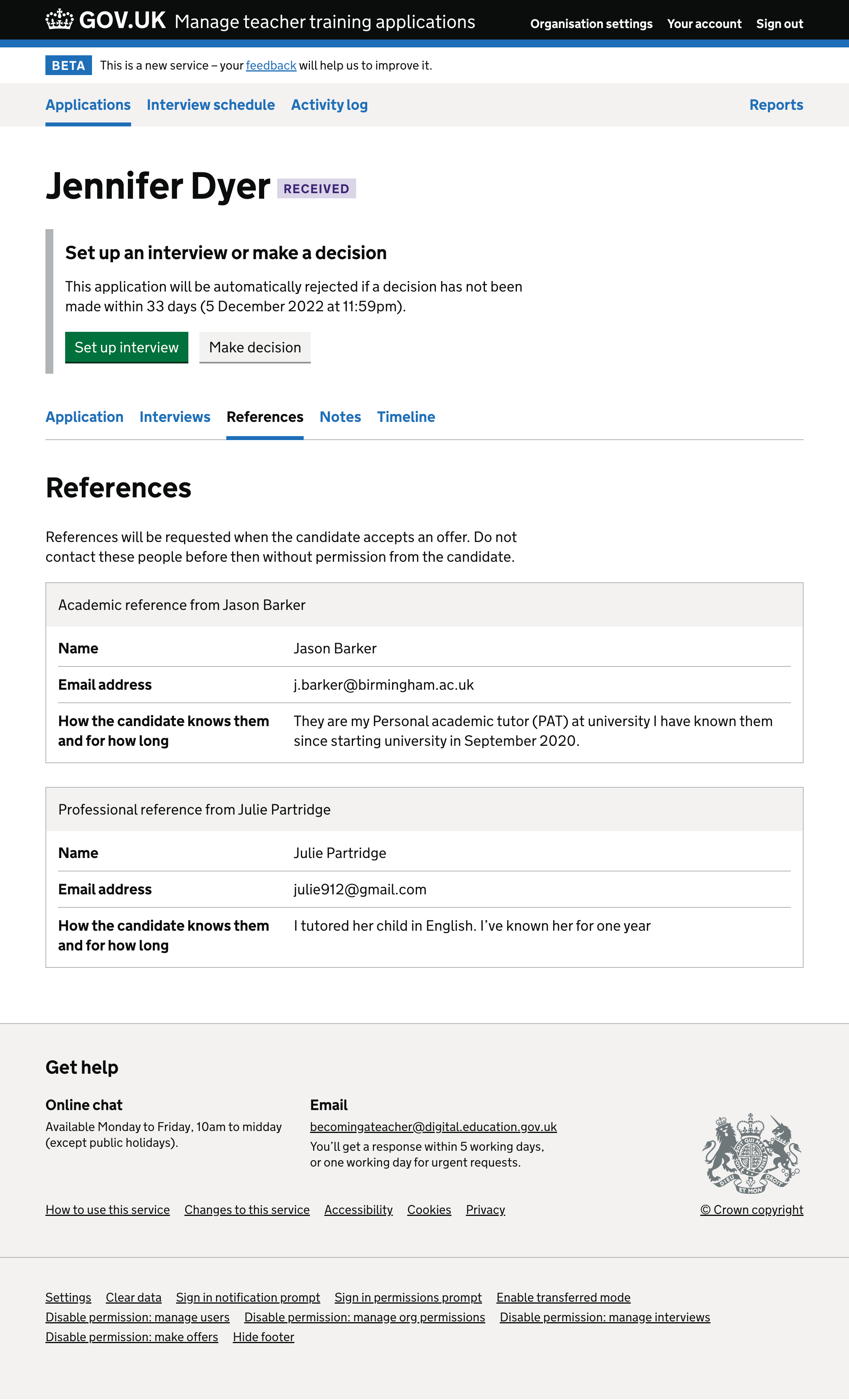
For the 2022 to 2023 recruitment cycle, we changed the references process so that candidates do not need to receive references before they submit their application. They instead need to give details of 2 people who can give a reference.
To support this change, we moved the information about references in Manage so that it was no longer part of the application page, but instead appears in a new references page.
This change was made on 11 October 2022. This was the date when candidates could start submitting applications and providers could start making offers for the 2022 to 2023 recruitment cycle.
The issue
The application page in Manage contains all the information that a candidate submitted at the time of application. With the new references process, this would contain details of 2 people who can give them a reference. However, these details can be changed and added to by the candidate once an offer has been accepted. The actual reference is also no longer collected until after an offer has been accepted.
We needed to make the change of references process clear to providers, as well as making it easy for them to review references as they arrive once an offer has been accepted.
What we changed
We created a new references section.
The design and content for this section is slightly different depending upon whether the candidate has accepted an offer or not.
Before a decision has been made

When the application has been received, but the provider has not yet made a decision, we show the details of the people who can give a reference that the candidate provided on their application.
We added some content at the top to explain that references will be requested when a candidate accepts an offer, and that providers should not contact these people before then without receiving permission from the candidate.
After a candidate has accepted an offer

Once a candidate has accepted an offer, the page shows a section for references that have been received, and another section for references that have been requested but not yet received. A line at the top summarises how many references are in each state.
Any references where someone said they were unable to give a reference, or where the candidate cancelled the reference, are still shown as requested. This is to avoid providers interpreting these negatively.
If an application is unsuccessful
An application is considered unsuccessful in these scenarios:
- the provider rejects the application
- the candidate declines an offer
- the candidate withdraws their application
In these scenarios, there is no longer any need for the provider to see the references, and so the references page is no longer shown. This helps to limit the unnecessary exposure of the contact details of the people the candidate said could give them a reference.
Future considerations
We plan to review the new references process once it has been running for several months.
We could consider:
- whether showing reference details before references have been received is needed or not
- how providers could let candidates know when they’ve received sufficient references
- if any further guidance is needed on how references should be used